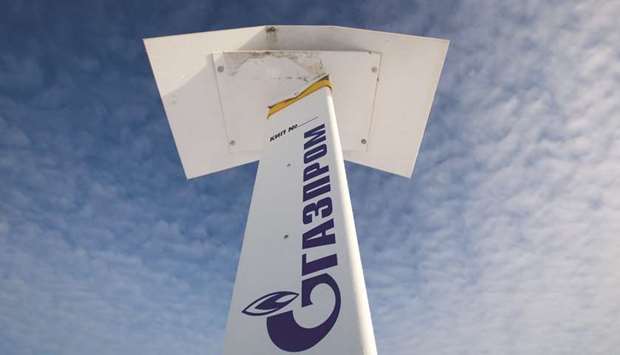The unprecedented wave of liquefied natural gas hitting Europe has the region’s dominant pipeline supplier of the fuel taking evasive action like never before.
Gazprom PJSC has this year dramatically curbed supplies to the region as prices linger near their lowest in a decade on a seasonal basis. Brimming gas stores, no sign of a cold snap that would boost demand and huge tankers arriving daily with even more fuel mean there’s less room for Russian gas in the market.
In the past, whether prices were high or low, the company usually kept pumping the fuel from its giant fields in western Russia and Siberia. But flows so far this year via its key Ukraine transit routes are lower than at anytime in the past six years.
Gazprom’s foreign sales advanced in recent years, except for 2019 and 2014, according to data from Gazprom’s export arm. But normally reliable energy consumers in Asia are turning away LNG ships that are instead dumping cargoes in the more liquid European market, undercutting the price of fuel sold via Gazprom’s long-term contracts, which to some extent are still tied to oil.
“The LNG shipments are very much limiting their options,” said Norbert Ruecker, head of economics at Julius Baer Group Ltd. “While they can trim shipments temporarily, what they can’t do is sustainably prop up prices in Europe, because that will just encourage LNG.”
Consumption of LNG in Europe doubled last year, with plants from the US to Russia starting up.
That wave most likely contributed to a drop of 1.3% last year for Gazprom’s sales to the European Union, Turkey and China. The company didn’t break out Europe specifically.
Thierry Bros, an associate at Harvard University’s Davis Center for Russian & Eurasian Studies, likened the situation Gazprom now finds itself in with what Saudi Arabia is doing in the oil market to protect its franchise.
The Russian producer wants prices that are low enough to protect its share and yet not so high that they attract new competition from new LNG projects around the world, Bros said.
Norwegian gas exporter Equinor ASA has also been forced to reduce shipments. The company, which has an explicit value-over-volume policy, curbed supplies to Europe last year by about 4.5%. The state-controlled producer, Europe’s second biggest supplier, said on Tuesday it was well positioned to remain competitive.
Gazprom didn’t respond to a request for comment.
The Moscow-based company and Equinor are now in an “Opec-like situation. They are doing some supply policy,” Ruecker said.
But the cuts haven’t had the impact Gazprom probably intended. While benchmark prices jumped on Friday, they gave up more than that in the first three days of this week.
Nature is also playing its role. The absence of a real winter so far has left storage sites at record levels for this time of year.
“If we continue to run with the huge stockpiles of gas, the price has to be low,” said Trevor Sikorski, a carbon and gas analyst at Energy Aspects Ltd. in London. “We are pretty much at summer prices, which suggests summer prices will get very low indeed.”
To reduce the reliance on Ukraine, even though it signed a new five-year transfer deal on December 30, Gazprom is diversifying. President Vladimir Putin and his Turkish counterpart Recep Tayyip Erdogan were due to meet in Istanbul on Wednesday to inaugurate a pipeline that will carry Russian gas to Europe under the Black Sea.

A branded marker post sits above the ground marking the Gazprom Power Of Siberia gas pipeline, near Svobodny, in the Amur region, Russia. Gazprom has this year dramatically curbed supplies to the region as prices linger near their lowest in a decade on a seasonal basis.


